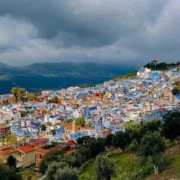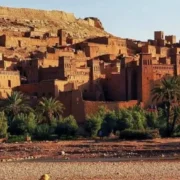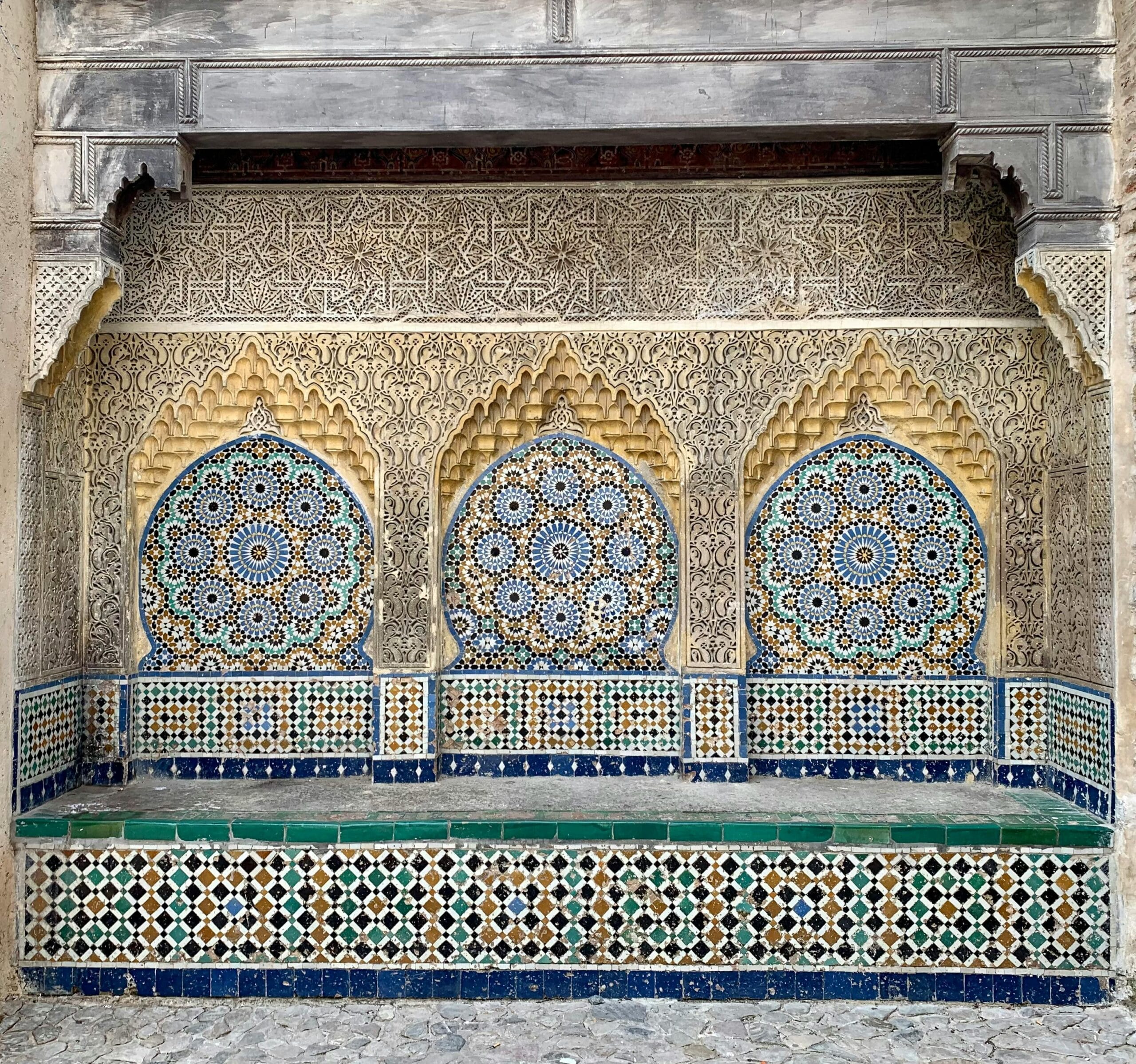
Moroccan Tiles: How to Use Them in Kitchens, Bathrooms, and Floors
Moroccan tiles are a stunning reflection of Morocco’s rich artistic and architectural heritage. With intricate geometric patterns, vibrant colors, and exceptional craftsmanship, these tiles have been an integral part of Moroccan culture for centuries. Whether used in traditional palaces, mosques, or modern homes, Moroccan tiles continue to captivate designers and homeowners worldwide. In this article, we explore the history, craftsmanship, patterns, pricing, and modern applications of Moroccan tiles.
Table of Contents
The History of Moroccan Tiles ( Zellij)
The tradition of Moroccan tilework, known as Zellij (or Zellige), dates back to at least the 10th century. This unique form of mosaic tilework was heavily influenced by Hispano-Moresque art and Islamic geometric principles. Over time, Moroccan tiles became a defining feature in royal palaces, religious buildings, and traditional Moroccan homes.
The city of Fez is particularly famous for its high-quality Zellij production, thanks to its superior Miocene grey clay. The intricate tile patterns were historically reserved for royalty and elite members of society, but today, they are accessible to anyone looking to add a touch of Moroccan elegance to their space.
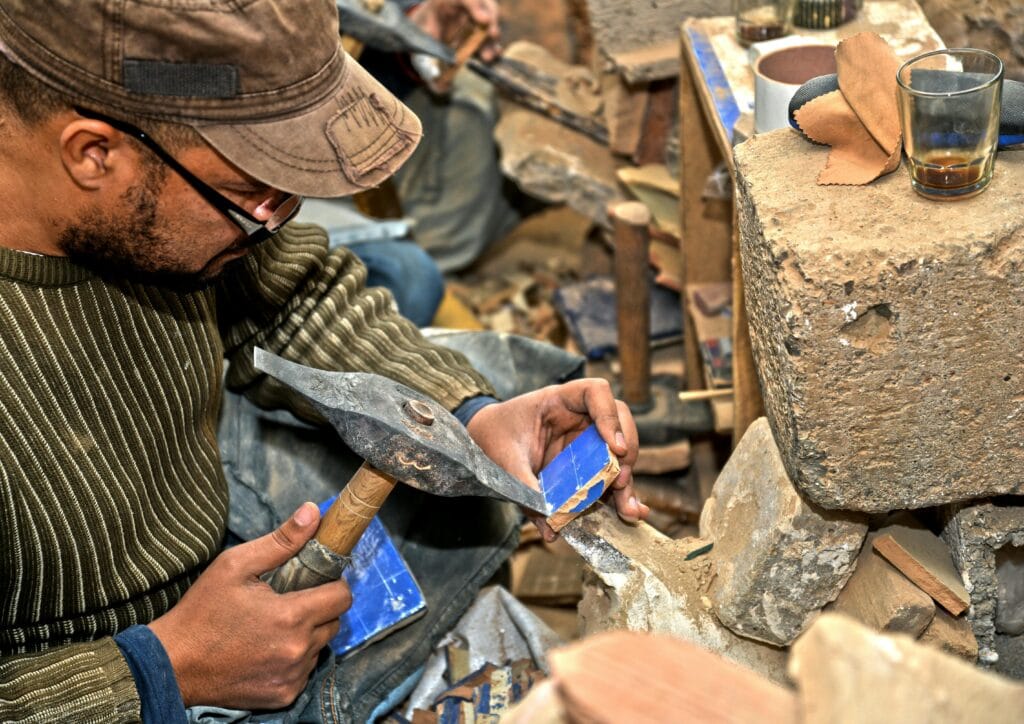
The Craftsmanship Behind Moroccan Tiles
The making of Moroccan tiles is a labor-intensive process that requires exceptional skill. Artisans, known as ma’alems, carefully shape tiles into precise geometric pieces using specialized tools. The steps involved in creating Zellij include:
1. Clay Selection & Shaping
High-quality clay is sourced and molded into tile shapes before being left to dry.
2. Kiln Firing
The dried tiles are fired in a kiln at high temperatures, ensuring durability.
3. Glazing & Coloring
Traditional Moroccan colors such as cobalt blue, emerald green, saffron yellow, and terracotta red are applied.
4. Hand-Cutting
Each tile is meticulously hand-chiseled into intricate geometric shapes.
5. Assembly
Artisans carefully arrange the tiles into complex patterns before applying plaster to secure them.
Sahara Desert Morocco Tour A Journey from Marrakech to Timeless Beauty
Moroccan Tile Designs and Patterns
Moroccan tiles are distinguished by their elaborate patterns, inspired by Islamic art and nature. Some of the most popular designs include:
- Geometric Patterns – Featuring stars, polygons, and symmetrical motifs.
- Arabesque Patterns – Flowing, interlaced lines inspired by Islamic calligraphy.
- Floral Motifs – Delicate floral designs that add elegance and beauty.
- Fish Scale Tiles – Unique curved designs resembling fish scales, adding movement and texture to walls or floors.
Moroccan Tiles in the Kitchen
Moroccan tiles are an excellent choice for kitchen interiors, bringing a vibrant and exotic feel to the space. They can be used as:
- Backsplashes – The colorful patterns make kitchen backsplashes a striking focal point.
- Countertops – Durable and stylish, Moroccan tile countertops add character to any kitchen.
- Accent Walls – A Moroccan tile accent wall can transform the entire ambiance of a kitchen.
- Kitchen Islands – Wrapping a kitchen island with Moroccan tiles makes it a show-stopping centerpiece.
Moroccan Tiles in the Bathroom
Bathrooms can benefit from the beauty and durability of Moroccan tiles. Some of the best applications include:
- Shower Walls – Adding Moroccan tiles to shower walls creates a luxurious and spa-like experience.
- Bathroom Floors – These tiles provide a slip-resistant surface while enhancing aesthetics.
- Vanity Surrounds – Using Moroccan tiles around a bathroom vanity introduces a unique and artistic touch.
- Bathtubs & Sinks – Hand-painted Moroccan basins and bathtub surrounds bring a touch of tradition to modern bathrooms.
Handmade Moroccan Tiles
Each handmade Moroccan tile is a work of art, crafted by skilled artisans. Unlike machine-made tiles, handmade tiles possess unique imperfections that add to their charm and authenticity. These tiles are produced using traditional methods, ensuring their quality and distinct appearance. Handmade Moroccan tiles are particularly sought after for their durability and ability to create stunning, one-of-a-kind designs.
Moroccan Tiles for Flooring
Moroccan tiles are a fantastic flooring option, offering a blend of durability and aesthetics. Popular uses include:
- Indoor Flooring – Living rooms, hallways, and kitchens can be enhanced with Moroccan tile floors.
- Outdoor Patios – Moroccan tiles withstand various weather conditions, making them ideal for patios and terraces.
- Mosaic Entryways – Grand entrances with Moroccan tile flooring set an elegant tone for any home.
- Staircases – Moroccan tile risers add color and character to otherwise ordinary staircases.
Moroccan Tile Prices
The cost of Moroccan tiles varies depending on factors such as materials, craftsmanship, and design complexity. Handmade tiles tend to be more expensive due to the labor-intensive process involved. Prices typically range from:
- Basic Machine-Made Tiles – $5 to $10 per square foot.
- Handmade Zellij Tiles – $15 to $50 per square foot.
- Custom and Hand-Painted Tiles – $50+ per square foot, depending on intricacy.
Despite the cost, Moroccan tiles are a long-term investment that adds value and beauty to any space.
How to Maintain Moroccan Tiles
To keep Moroccan tiles looking their best, follow these maintenance tips:
- Regular Cleaning – Use mild soap and water to clean tiles; avoid harsh chemicals.
- Sealing – Seal porous tiles to prevent staining and moisture absorption.
- Avoid Abrasives – Use soft cloths or sponges instead of abrasive scrubbers.
- Repairing Chips – Replace damaged tiles with matching ones to maintain the pattern’s integrity.
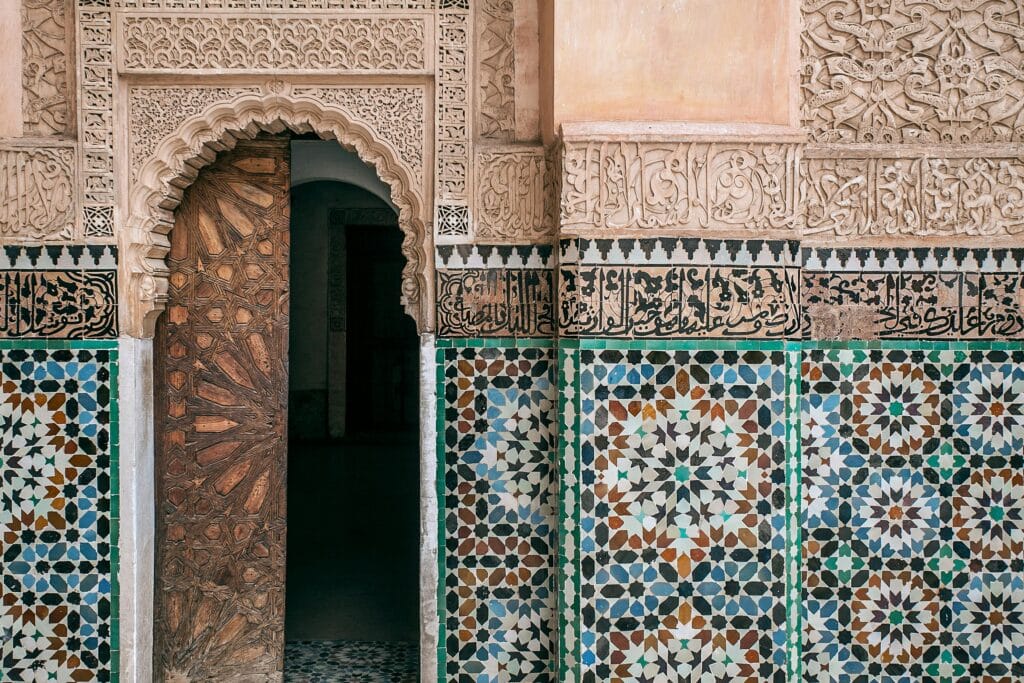
Why Moroccan Tiles Are Trending in Interior Design
With a growing appreciation for artisanal craftsmanship, Moroccan tiles are making a strong comeback in modern interior design. Their timeless appeal, durability, and versatility make them a favorite choice for architects and homeowners alike. Moroccan tiles are not just decorative elements; they are an art form that tells a story of centuries-old craftsmanship and cultural significance.
Conclusion
Moroccan tiles continue to enchant the world with their intricate designs and rich history. Whether used in traditional or modern settings, they offer a timeless beauty that enhances any space. If you’re looking to incorporate a touch of Moroccan elegance into your home, Moroccan tiles are the perfect choice. Their blend of history, artistry, and durability ensures they remain a cherished design element for generations to come.
Ready to Transform Your Space with Moroccan Tiles?
Explore authentic Moroccan tile collections and bring a piece of Morocco’s artistic heritage into your home today!
Recent Posts
Day Trip from Marrakech to Chefchaouen:Travel Tips, Distances And Better Alternatives
Marrakech Tours :Best Guided Tours and Day Trips in Morocco
Marrakech Day Trips Tours for 2025: Where to Go and What to Expect
Tags

Sahara Desert

Mountains


